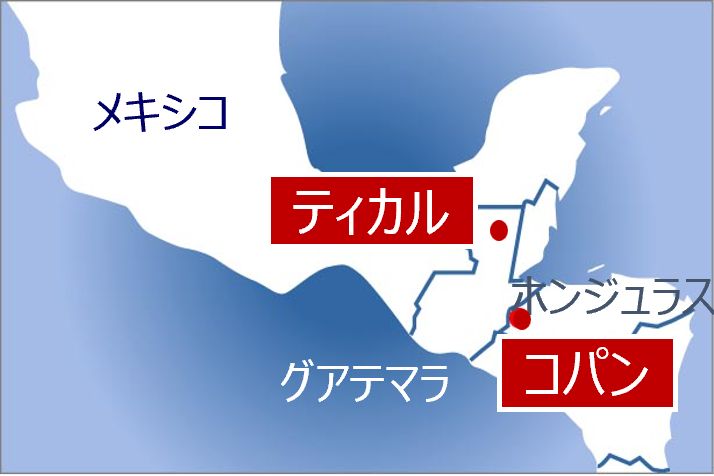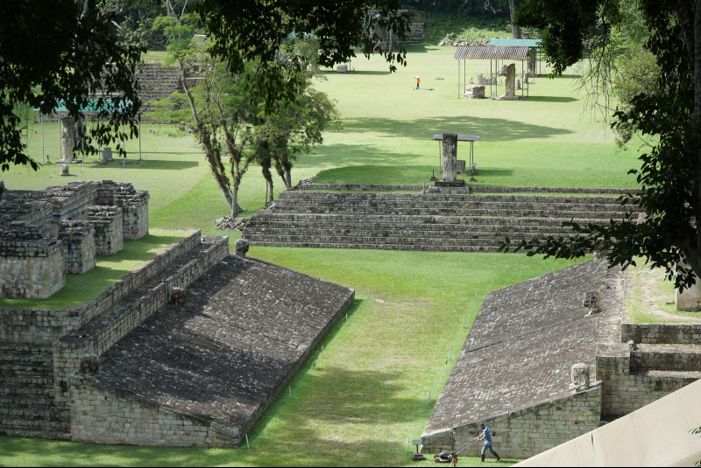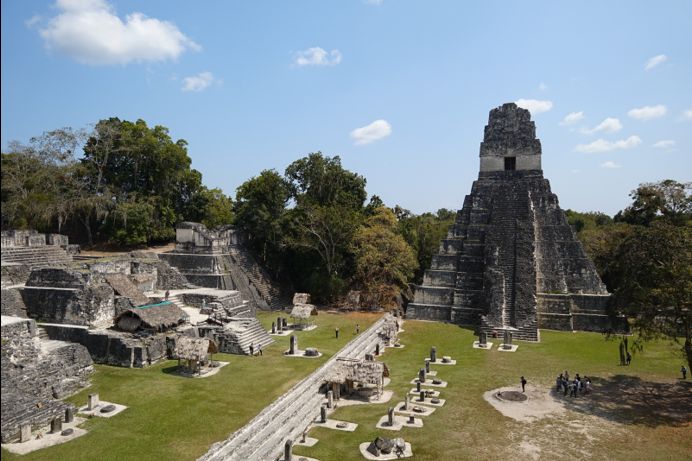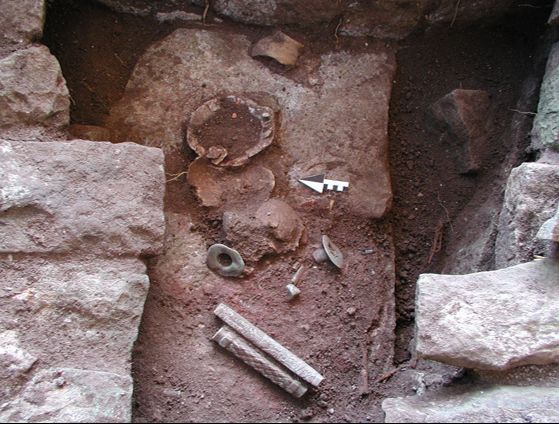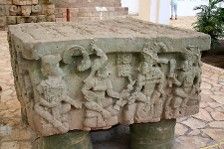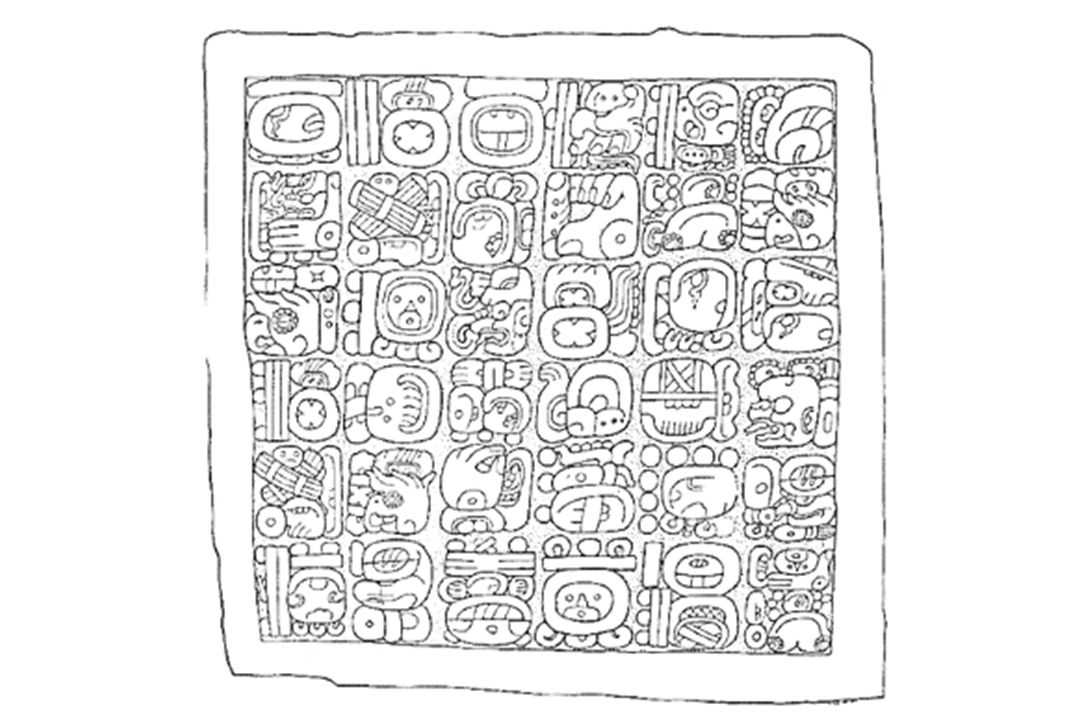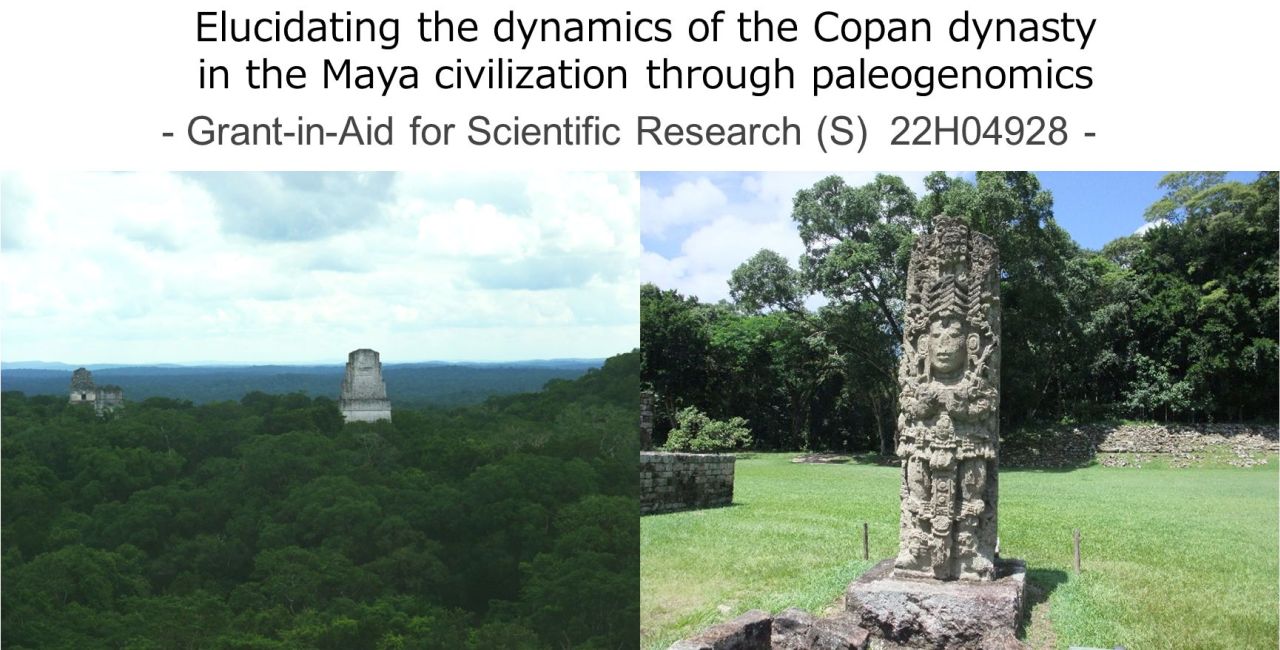
Elucidating the dynamics of the Copan dynasty in the Maya civilization through paleogenomics
- Grant-in-Aid for Scientific Research (S) 22H04928 -
Paleogenomics is a field that seeks to extract a large amount of genomic information from ancient human bones to scientifically elucidate aspects of kinship, marriage systems with other local societies etc. that have not been clearly visualized by conventional archaeological research. In the past, the analysis of mitochondrial DNA sequences was the limit, but now, with the development of technology, it is possible to decipher the entire genome, and the quality and quantity of information obtained has entered a new phase.
This study seeks to elucidate the dynamics of the Copan dynasty by extracting and analyzing a large amount of genomic information from several hundred samples of ancient human remains, including those excavated from the royal tombs at the World Heritage "Maya Site of Copan".
Grant-in-Aid for Scientific Research (S)
Database of Grants-in-Aid for Scientific Research(KAKEN) (https://kaken.nii.ac.jp/en/grant/KAKENHI-PROJECT-22H04928/)
| Principal Investigator | NAKAMURA Seiichi Director, Research Center for Next Generation Archaeological Studies / Special Recruited Professor, Graduate School of Sustainable Systems Science, Komatsu University |
| Co-Investigator | NAKAGOME Shigeki Visiting Associate Professor, Institute for the Study of Ancient Civilizations and Cultural Resources, Kanazawa University Assistant Professor, School of Medicine, Trinity College Dublin |
| ITO Nobuyuki Assistant Professor, Graduate School of Humanities Department of Humanities, Nagoya University |
|
| ICHIKAWA Akira Associate Professor, Institute for the Study of Ancient Civilizations and Cultural Resources, Kanazawa University |
|
| Collaborator | GAKUHARI Takashi Associate Professor, Institute for the Study of Ancient Civilizations and Cultural Resources, Kanazawa University |
Research Plan (Research Area, Research Materials, and Research Methods)
The decipherment of Maya inscriptions since the mid-1980s, has revolutionized the way we study the Maya civilization, allowing us to reconstruct the dynastic history of each kingdom, which could not be revealed by conventional archaeological methods. However, the "history" inscribed by the kings requires adequate historical criticism. According to the inscriptions, the founder of the Copan dynasty was a foreign king, whose origin is thought to be Tikal in Guatemala, based on similarities in contemporaneous architectural styles and pottery typologies. Is this statement a historical fact? Advances in isotope chemistry made it possible to distinguish between local natives and immigrants from other regions, but it was not possible to verify the origin of the kings who ruled each city or the linkage between the royal families.
In this study, we extracted a large amount of genetic information from the ancient human skeletal remains we excavated to verify the history inscribed on the monuments and to explore the genealogy of individuals such as "kings," "queens," and "royal children" to elucidate the historical dynamics of the Copan Dynasty, one of the most representative ancient city states of the Maya civilization.
Analysis of Genetic Information on Royal Family Human Bones
The material to be analyzed for this study consists of approximately 300 human skeletons with known provenance, context, and chronology, which were excavated and recovered by the principal and collaborative investigators in Copan and its peripheral areas over the past 37 years. In addition, in order to clarify the kin relationship between the royal families of the two Maya kingdoms, Copan and Tikal, through genome analysis, in addition to the royal human remains excavated in Copan by the principal investigator, three other ancient human remains that have been identified as "royal" both epigraphically and archaeologically, will be sampled with a special permission from the Honduran government. Excavation of a royal tomb at Tikal in Guatemala will be conducted to recover archaeological human remains whose provenance, context, and chronological position are clear. A minimum amount of samples will be obtained with the permission of the each government.
Expected Research Achievements
The Maya civilization at Copan: Were the general population of Copan non-Mayan?
It is hypothesized that in the Kingdom of Copan, the ruling class was a Mayan group connected to the ruling class of Tikal and other powerful kingdoms in the core zone of Maya civilization in Guatemala, while the general population was a non-Maya ethnic group connected from central Honduras to El Salvador. In this study, we will approach this question together with archaeological data by identifying the genetic origins of the ruling class and the general population by obtaining genomic data not only from ancient human remains in Copan and its peripheral area from the preclassic period before the founding of the dynasty, but also from ancient human remains from contemporaneous sites in El Salvador and Guatemala.
Origins and genealogy of the Copan dynasty:
Is the historical information in Maya inscriptions true?
Although "historical information“ is treated as historical fact in the current study of Maya civilization, as proposed by epigraphers, without sufficient historical criticism, it is possible to directly trace the royal genealogy by reconstructing the genealogy based on genomic information. In this study, we approach this problem together with archaeological data, especially by adding the analysis of royal human bones excavated at Tikal, which is considered to be the origin site of the Copan dynasty.

